Slim Aarons' Photographs Are A Window Into Another Time
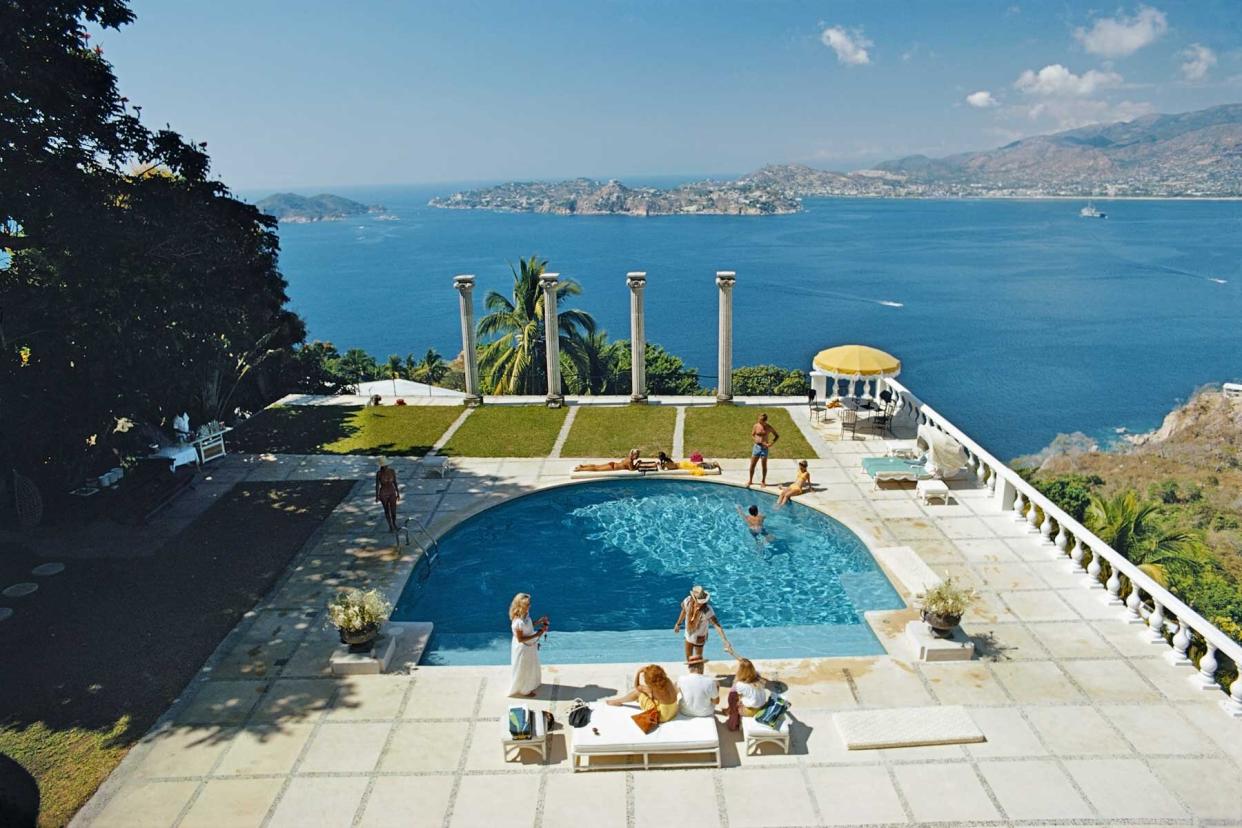
Slim Aarons/Getty Images Aarons’s image of the pool at Villa Nirvana in Acapulco, Mexico, was shot on assignment for Travel + Leisure in 1972. It went on to become one of the decade’s most iconic photographs.
Considering all the articles I've written and all the speeches and interviews I've given about the life and work of Slim Aarons, you'd have thought the photographer and I were best friends. You'd be wrong. The truth is that Slim never much cared for me and resented the fact that I was editor in chief of Travel + Leisure and Town & Country—two magazines he was closely connected to. I thought he was an incredible talent, but I also saw him as arrogant, petulant, and, at times, simply impossible.
For those of you who need an introduction or, at the very least, a reminder: George A. Aarons, known as Slim (he was tall and slender), was, from the 1950s to the late 70s, the self-appointed photographer-in-chief of what was then known as "high society." Today, his name is synonymous with images that epitomize life in those decades at its wealthiest and most glamorous. Less well-known is the fact that he was also an accomplished travel photographer—and that some of his most iconic photographs were shot for this magazine.
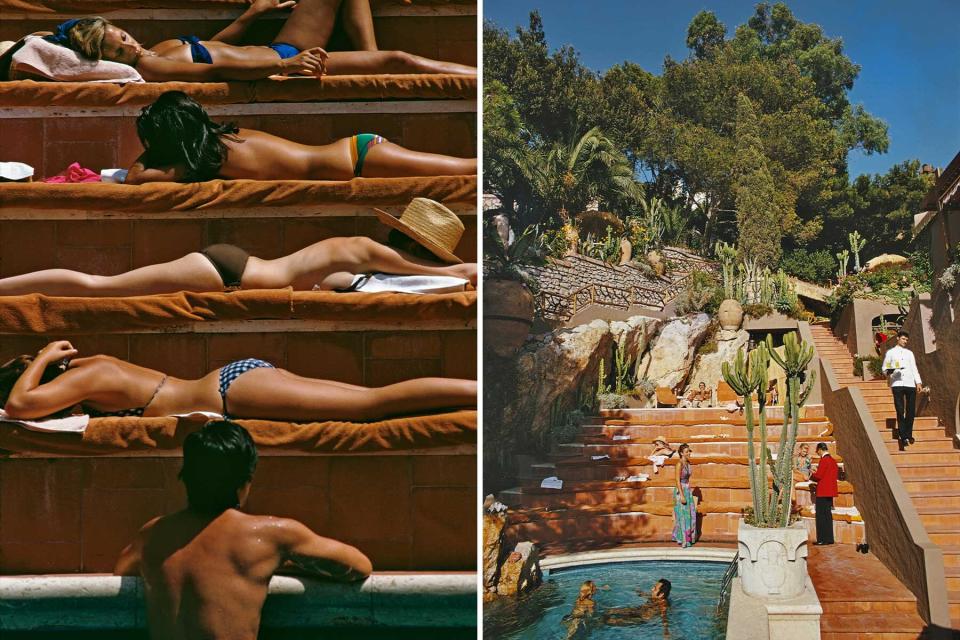
Slim Aarons/Getty Images From left: In this August 1974 shot, Aarons caught a swimmer taking in the views at the Hotel Punta Tragara, on the Italian island of Capri; another poolside scene from The Hotel Punta Tragara.
Slim was born to Yiddish-speaking immigrant parents on the Lower East Side of Manhattan, and his childhood years are said to have been marked by poverty and his mother's mental illness. Later, Slim would claim he was an orphan, and that he had been raised in New Hampshire; his real roots remained hidden for his entire adult life.
His career took off at Holiday, America's first travel magazine, thanks to his mentor, the legendary art director Frank Zachary. In 1971, when Frank moved to Travel + Leisure, Slim became a frequent contributor. The following year, when Frank was appointed editor in chief of Town & Country, Slim once again followed, and continued to shoot for that title for three more decades.
Slim's world was unapologetically that of the wealthy, wherever they happened to be and whatever they happened to be doing. He had access to the rich that others could only dream of—to their chateaux, palazzos, ski lodges, members-only clubs, and yachts. When Slim came calling, doors that were usually closed were thrown wide open. His charm could be irresistible, and he was clever enough to always show his subjects at their best.
He had access to the rich that others could only dream of—to their chateaux, palazzos, ski lodges, members-only clubs, and yachts. When Slim came calling, doors that were usually closed were thrown wide open.
He didn't start out as a society photographer. First he covered World War II for Yank and Stars and Stripes magazines, and saw his share of combat in the process. When the war was over, he contributed to Life for a while; his beat was Hollywood. When Slim met Frank, things took a turn for the better. The timing was perfect: he'd had it with hardship, and with Hollywood, too. His mantra became "photographing attractive people doing attractive things in attractive places."
Related: What Airplane Food Looked Like Through the Decades
I met Slim in 1968, when I began work as a lowly researcher at Holiday, and would fact-check his captions and text—which were typically written by whichever freelance assistant had accompanied him on assignment. As a presence, Slim was hard to ignore. He never had an appointment; he just dropped by, and when he did, he stole all the oxygen in the room.
As I wrote in Holiday, my book on the history of the publication: "At six foot two he sported a perpetual tan and always donned a button-down oxford shirt and a navy-blue blazer with its sleeves rolled up. Other photographers were far more tolerable and no less talented in their way. But Slim ruled and he knew it."
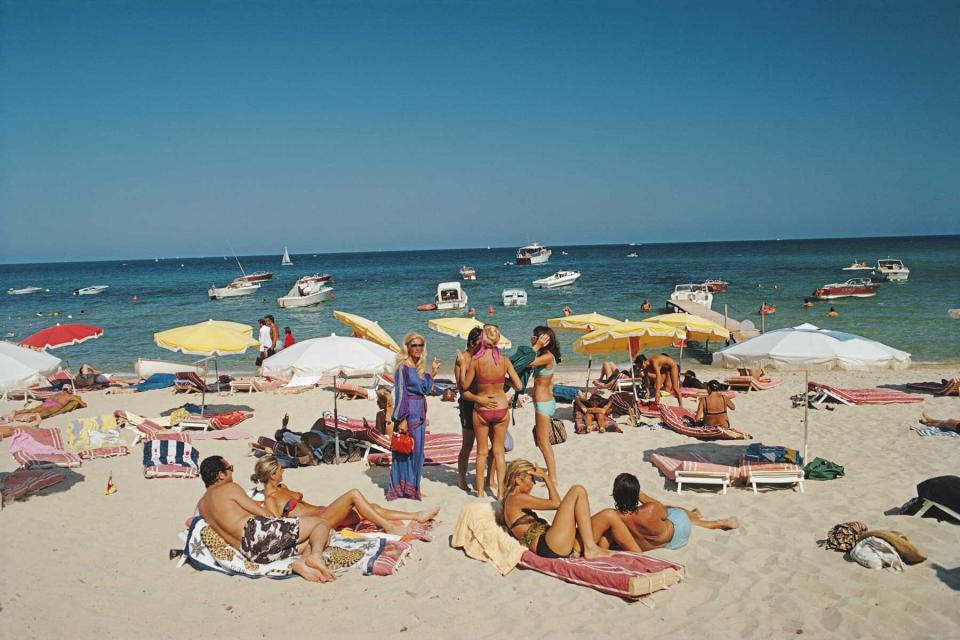
Slim Aarons/Getty Images In August 1971, Aarons flew to St.-Tropez, France, to photograph the swinging beach scene for T+L.
In 1971, Caskie Stinnett, who had been editor in chief of Holiday in the late 60s, became editor of T+L, and brought me and Frank Zachary with him. Where Frank went, Slim followed. There were others in Frank's stable, but Slim was the chosen one, the photographer who got the juiciest assignments trailing Baron This and Duchess That to their various playgrounds around the world.
My all-time favorite photo by Slim is his image of an enormous reclining Buddha in Myanmar (then Burma). A closer look reveals, almost in miniature, a man sweeping the statue with a broom. The effect is breathtaking.
When Slim began his career as a travel photographer, he usually followed a writer who had already traveled on assignment, so his images could reflect the story. Eventually, as both his confidence and reputation grew, he convinced Frank to let him go just about anywhere he wanted, which led him to many of the iconic destinations he became famous for: Acapulco, St.-Tropez, Capri, the Caribbean. Invariably, there was a beach blanketed with bikini-clad beauties, or a swimming pool surrounded by sunbathers. Today, that doesn't feel especially novel, but back then it was eye-popping.
It was when Slim was assigned to shoot places off his usual radar that he returned with some of his most astonishing work—such as in Venice, Sicily, or Malaysia. I'm not sure Slim even realized just how great he could be when he wasn't focusing on an heiress in a caftan on a chaise. In fact, my all-time favorite photo by Slim is his image of an enormous reclining Buddha in Myanmar (then Burma). A closer look reveals, almost in miniature, a man sweeping the statue with a broom. The effect is breathtaking.
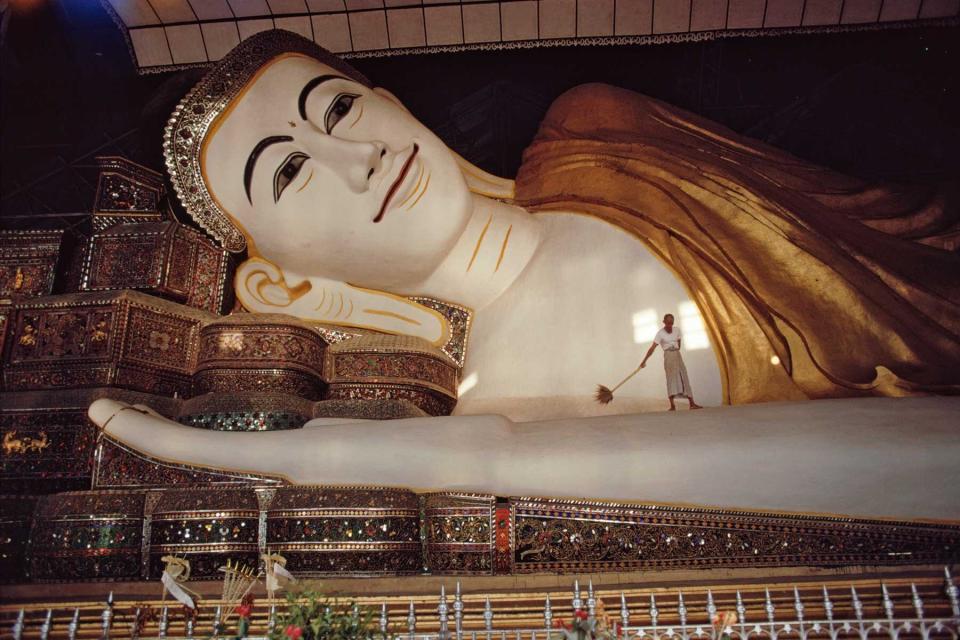
Slim Aarons/Getty Images Aarons shot this temple worker cleaning the 180-foot-long Shwethalyaung Buddha in Bago, Myanmar, in February 1971.
In 1975, Stinnett announced his retirement, and something unexpected happened: I was appointed as T+L's editor in chief. This was not good news for Slim. For one thing, I was a woman. For another, I was inexperienced. Worse, I was asked to bring in some fresh talent. It didn't mean that Slim no longer had a place at the magazine, only that he would have to share the wealth—as well as the wealthy—with other photographers in waiting. Needless to say, Slim was not good at sharing.
Luckily Frank was waiting with open arms at Town & Country, where their long and happy collaboration lasted until Frank's retirement in 1991. There was a great deal of speculation as to who would succeed Frank. The first one was a mistake—hired and fired in less than a year. Then there came a second: me.
We tried to make it work. For my first issue, in October 1991, I assigned Slim a story on the exclusive community of Millbrook, in Dutchess County, New York. We gave him eight pages, more than anyone else in the issue. It wasn't enough. One day he came to the office, stopped by my door, and said in a booming voice that everyone could hear, "I quit!" To which I replied, "Slim, you can't quit; you're not an employee."
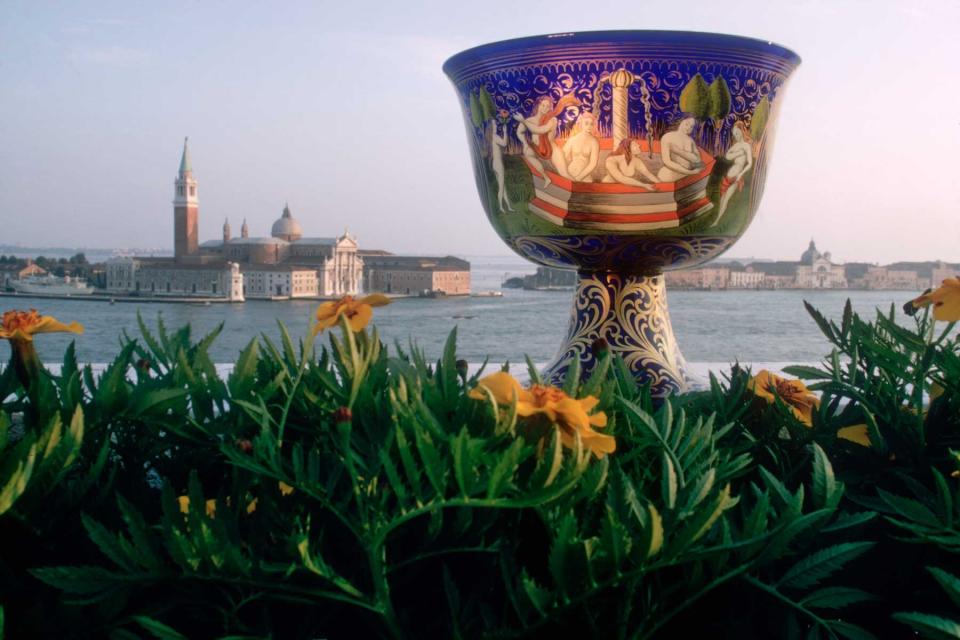
Slim Aarons/Getty Images The Venetian Lagoon seen from the island of Murano, captured by Aarons for T+L in 1972. In the foreground is a reproduction of the Barovier Cup, which was made on the island in the 15th century.
And so the uneasy alliance between editor and photographer came to an end. The irony is that I probably have as high a regard for the work of Slim Aarons as I ever did, maybe more.
I remember preparing for an interview about Slim in the dining room of my apartment several years ago. I placed issues of Holiday, Travel + Leisure, and Town & Country tabbed to his stories on the table and laid out a pile of his books, including his first, A Wonderful Time, which now sells for up to $2,000 on eBay.
When my editor arrived, he looked at the table and said, "Pamela, for someone who didn't really like the guy, you sure have a lot of him in your life."
A version of this story first appeared in the August 2021 issue of Travel + Leisure under the headline In A Class Of His Own.